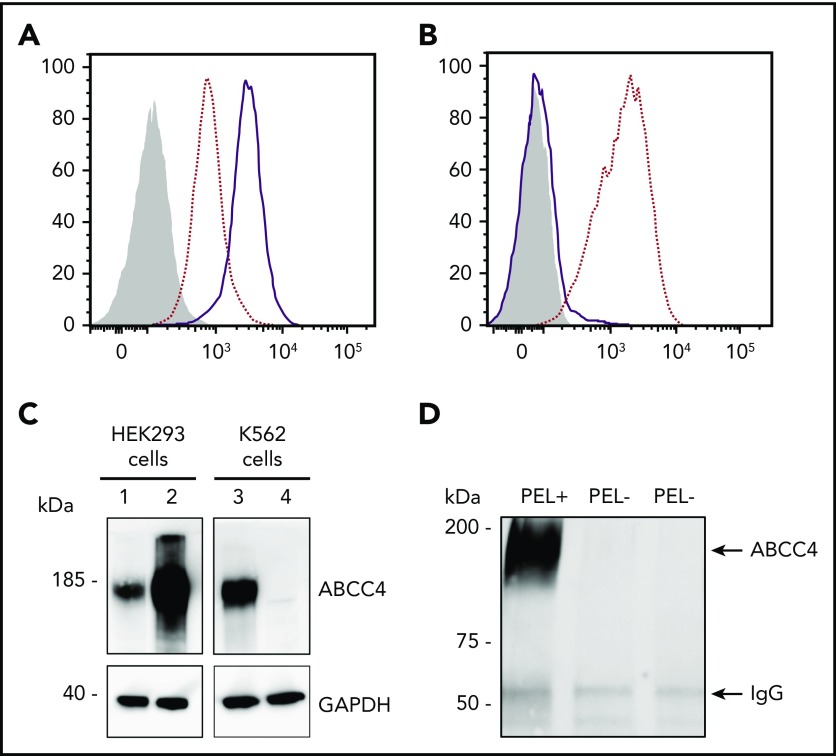Figure 2.
The ABCC4 transporter carries the PEL blood group antigen. (A) Cell surface expression of the PEL antigen in ABCC4-transfected HEK293 cells. HEK293 cells stably transfected with ABCC4 cDNA (thick lines) or an empty vector (dotted lines) were labeled with an anti-PEL and analyzed by flow cytometry. The gray profile corresponds to cells incubated with the secondary antibody only. (B) Surface level of PEL antigen on K562 cells transfected with plasmid allowing expression of Cas9 nuclease in combination with guide RNA-guide targeting exon 8 of ABCC4 (thick line) or Cas9 nuclease alone without guide RNA-guide (dotted lines). The gray profile corresponds to cells incubated with the secondary antibody only. (C) Western blot analysis of ABCC4 expression in HEK293 and K562 cells. Fifty micrograms of proteins from lysates of ABCC4-transfected (lane 2) or control (lane 1) HEK293 cells and ABCC4-knockout (lane 4) or control (lane 3) K562 cells were resolved by SDS-PAGE under reducing conditions and probed with a monoclonal anti-ABCC4 antibody. Glyceraldehyde-3-phosphate dehydrogenase (GAPDH) was used as a loading control. (D) Anti-PEL eluate is able to immunoprecipitate ABCC4 from RBC membrane extracts of PEL-positive subjects, but not from 2 PEL-negative subjects. Immune complexes were analyzed by polyacrylamide gel electrophoresis under reducing conditions with heat denaturation, followed by western blot analyzes using the monoclonal anti-ABCC4.

